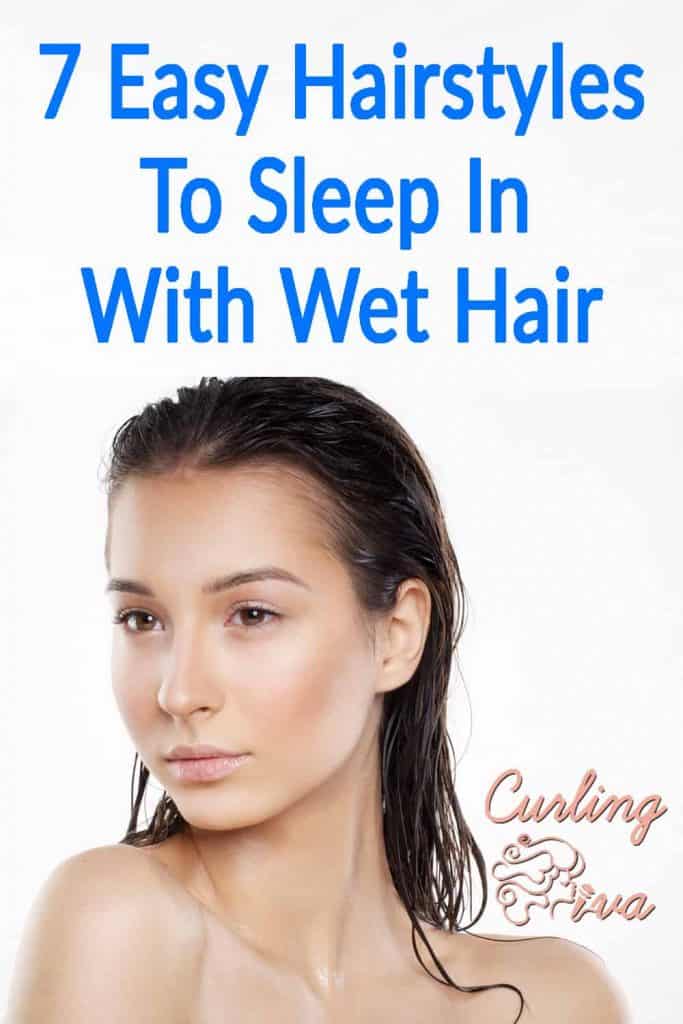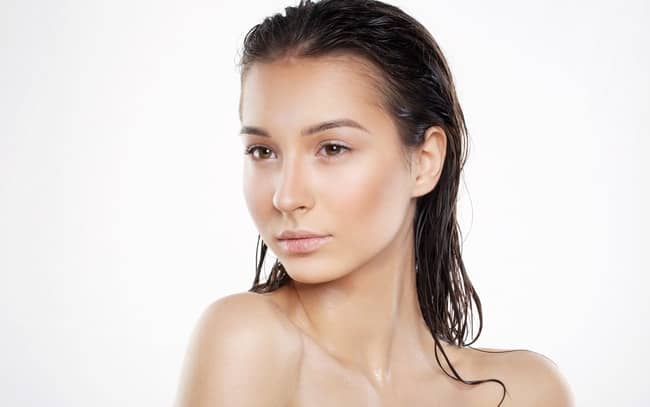Do you love the feeling of ending your day with a luxurious, hot shower, only to dread the inevitable struggle with soaking wet strands right before bed? You’re not alone. Many of us find ourselves pressed for enough time to fully blow dryer our long hair or let our manes air-dry completely. For years of experience in hair care, the conventional wisdom has been that sleeping on wet hair leads only to a messy, frizzy hair disaster and potential hair damage.
But what if we told you that your beauty sleep could also be your secret weapon for achieving a stunning good hair day?
The truth is, sleeping in certain protective styles is one of the best ways to leverage damp hair to set your desired natural texture or curl pattern, resulting in gorgeous natural waves or bouncy spirals with little time and effort. Forget the curling iron; these easy overnight hairstyles use your body heat and the slow drying process to lock in shape while minimizing friction and hair breakage.
This comprehensive guide breaks down the 7 Easy Hairstyles to Sleep in with Wet Hair, providing expert tips to ensure you wake up looking like you’ve just stepped out of a salon, not a swamp.
This post may contain affiliate links. If you click through and make a purchase, I’ll earn a commission, at no additional cost to you. Read my full disclosure here.
Why Sleep with Wet Hair? The Pros and Cons
While sleeping with wet hair can save you precious time, it’s important to understand the balance. When done correctly, using a protective sleep hairstyle can:
- Create Heatless Curls: The hair sets as it dries, giving you beautiful curls or beachy waves by morning.
- Minimize Frizz: By containing the hair, you protect wet strands from friction that leads to frizzy hair.
- Save Time: You can skip the tedious morning styling routine.
However, doing it incorrectly can lead to issues:
- Hair Damage: Wet hair is highly fragile and prone to hair breakage when pulled into tight hairstyles or slept on unprotected.
- Fungal Infections: Leaving your top of your head and scalp soaking much water for too long can create an ideal environment for moisture-loving microbes and lead to fungal infections. This is why ensuring your hair is only damp hair—not dripping wet—is crucial.
- Knotty Hair: Unprotected hair will mat and tangle into frustrating knotty hair.
Preparation is Key: Getting Your Hair Ready for Beauty Sleep
Before twisting, braiding, or pinning your hair, the preparation stage is vital for the best results and maximum hair health.
The Importance of Damp Hair (Not Wet)
The single best idea for success is to ensure your hair is mostly damp hair—about 70-80% dry—before you begin styling. If there is excess moisture, it will take too long to dry, increasing the risk of both microbial issues and a wet pillow, which causes static and moisture loss.
Pro-Tip: After washing, gently squeeze out much water and use a microfiber towel to absorb moisture quickly without roughening the cuticle.
Must-Have Tools and Products
The right products minimize hair damage and maximize your style’s hold.
- Leave-in Conditioner: A crucial step for all different hair types. Apply a quality leave-in conditioner from the mid-lengths to the ends to provide added moisture and lubrication, making the hair more resilient against friction. If you have dry hair or wet curly hair, follow up with a light hair oil or serum.
- Curl Cream or Mousse: If your goal is defined beautiful curls or waves, apply a small amount of curl cream to encourage your curl pattern to set.
- Wide-Tooth Comb: Always use a wide-tooth comb to gently detangle wet strands. Never brush wet hair, as this is a guaranteed way to cause hair breakage.
- Satin or Silk Accessories: Swap out harsh elastic hair ties for a satin scrunchie or silk scrunchie. These materials glide over the hair, preventing the tension and damage caused by traditional elastics.
- Hair Wrap or Headscarf: A satin scarf or silk headscarf is a good option for wrapping hair, especially for curly textures.
The 7 Best Protective Styles to Sleep in with Wet Hair
These best protective hairstyles are categorized by the look they achieve and are designed for comfort and minimal friction.
1. The High Bun (The Top Knot)
This is one of the best hairstyles for minimizing friction and adding volume at the root.
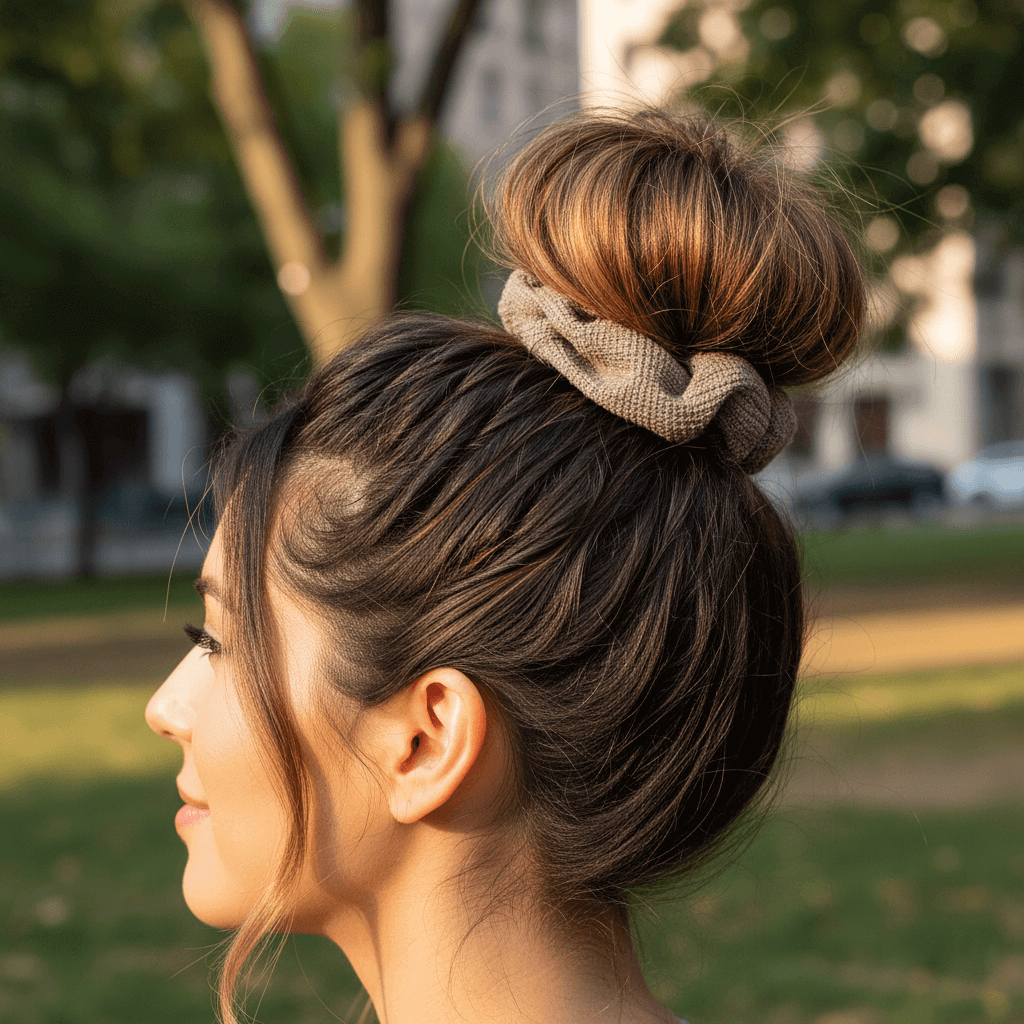
- How to do it: Gather all your long hair to the top of your head, aiming for a position where you won’t lie directly on it. This creates the classic top knot or top bun. Gently twist the hair into a loose bun or coil, and secure it with a large satin scrunchie or silk scrunchie. If your hair is too short for a single bun, you can create two smaller ones (dual buns).
- Best for: Achieving volume at the crown and a soft wave pattern, especially for wavy hair or thick straight hair. It’s a great option for those with slightly longer short hair that needs a lift.
- The Morning After: Shake it out for a voluminous, soft wave. If the roots are still damp, use a quick burst of cool air from a blow dryer or some dry shampoo to absorb moisture.
2. The Classic Braids: French, Dutch, and Loose
Braids are the original heatless curl method, offering reliable, structured waves.
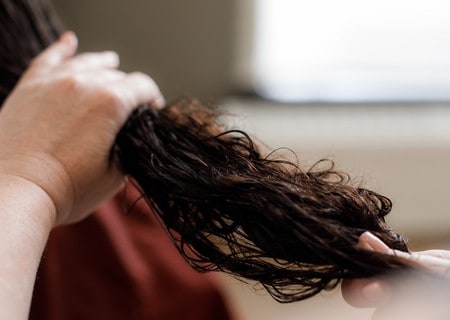
Variation A: The French or Dutch Braid (Structured Waves)
- How to do it: Begin braiding your damp hair down the back of your head. French braids weave the sections over the middle section, while Dutch braids (also known as a reverse French braid) weave the sections under, resulting in a braid that pops off the scalp. Two braids (dual braids) are a great way to ensure even drying and symmetric waves. Secure the ends with a soft hair tie or scrunchie.
- Best for: Even, tight waves all over the head. The Dutch braids offer more defined texture and volume.
- Important Tip: Ensure the braids are not tight hairstyles near the scalp, which can cause tension and hair loss. Keep them snug enough to hold their shape, but loose enough to be comfortable for beauty sleep.
Variation B: The Loose Braid (Beachy Waves)
- How to do it: Simply pull your hair back into a low ponytail (secured loosely) or start a standard three-strand braid at the nape of your neck. The key is to keep it a very loose braid that doesn’t put stress on the hair.
- Best for: Achieving natural-looking, soft beachy waves. It’s the easiest step for little time and a very good idea for straight hair that needs subtle movement.
3. The Pineappling Method
A revered technique in the natural hair community, Pineappling protects the existing curl pattern.
- How to do it: Tilt your head upside down and gather all your wet curly hair right at the very top of your head—even higher than a typical high bun. Secure the base of the “pineapple” with a silk scrunchie or satin scrunchie, making a very high ponytail (but not pulling the hair through all the way). The ends of your curls spill over like a pineapple top, hence the name pineapple-style updo. Finish by tying a silk scarf or satin headscarf around the sides and back of your head.
- Best for: Wet curly hair, natural hair, and maximizing volume while preventing frizzy hair and maintaining definition.
- The Morning After: Gently remove the scarf and scrunchie. Let the curls fall, and only touch them where necessary.
READ: How To Style Wet Hair In A Hurry
4. The Twisted Rope Braid
This technique is a good option for creating elegant, large spirals without braiding skill.
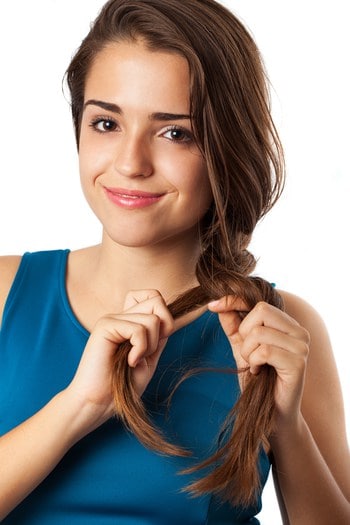
- How to do it: Divide your damp hair into two sections. Apply a little bit of curl cream or hair oil. Twist each section tightly in the same direction (e.g., clockwise). Then, twist the two sections together in the opposite direction (counter-clockwise). This counter-twist action ensures the “rope” stays intact all night. Secure the end with a soft elastic. This is similar to a fishtail braid in its final curl effect, but much easier to execute.
- Best for: Creating smooth, defined waves and loose ringlets, particularly in long hair or medium wavy hair.
- Why it works: The tight coil sets the hair in a predictable, smooth spiral, minimizing the friction that causes hair breakage.
5. Double Buns (The Space Bun Method)
If a single top knot is too voluminous or heavy, two lighter buns distributed across the head are the best idea.
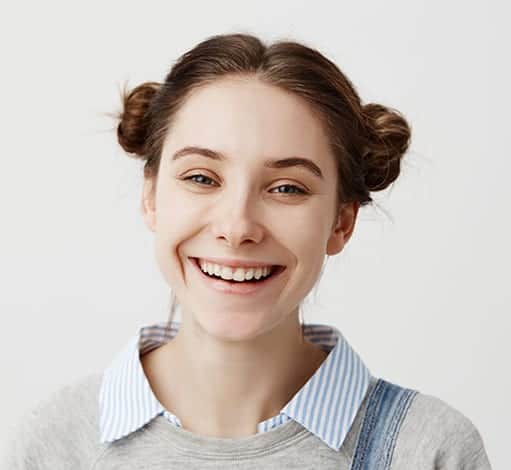
- How to do it: Part your hair down the middle. Apply a spritz of setting spray or water/leave-in mixture to ensure the hair is damp hair. Take one section and twist it loosely away from your face, coiling it into a bun on the side of your head. Secure the loose buns gently with bobby pins or a satin scrunchie. Repeat on the other side.
- Best for: Achieving tighter, more defined waves that start higher up on the head. This style is surprisingly comfortable hairstyles for sleeping.
- Pro-Tip: For extra tight curls, use the tiktok viral “sock bun” method for the base of each bun.
Check out: Quick Hairstyles For Wet Hair In The Morning
6. Bantu Knots or Pin Curls
For those seeking maximum curl definition, especially in wet curly hair or natural hair.
- How to do it: Apply leave-in conditioner and curl cream generously. Divide your mane addicts mane into small sections (1-2 inches). For each section, twist the hair tightly around itself until it coils into a small knot, or “Bantu knot,” against the scalp. Tuck the ends and secure them with a small bobby pins. Smaller sections yield tighter curls and vice-versa.
- Best for: Highly defined, springy curls in textured hair. This is one of the ultimate protective styles.
- Warning: These are technically tight hairstyles by nature, so ensure you are not pulling the hair too tightly at the root to avoid hair loss or headaches.
7. The Low and Loose Ponytail Stack (The Faux Lob)
An excellent method for medium-length hair or short hair that provides volume without creating a high bun.
- How to do it: Secure your damp hair in a very low ponytail at the nape of the neck using a satin scrunchie. Then, place another scrunchie 3-4 inches down the ponytail, and a third one another 3-4 inches down (depending on hair length). The result is a series of stacked, loosely secured bubbles.
- Best for: Giving short hair or shoulder-length hair a subtle, voluminous flip at the ends, mimicking the look of a bob or lob. It’s a quick, easy steps method for anyone with little time.
- The Morning After: Remove the scrunchies and smooth the ends with a hair oil.
READ: How To Stop Hair Breakage Caused By Ponytails
Pro-Tips for a Good Hair Day: Protecting Your Mane Overnight
Achieving the perfect hair starts with the right environment for your protective sleep hairstyle.
Choose the Right Bedding
The material you lay your head on is often overlooked, but it is critical for preventing hair damage and preserving natural oils.
- Ditch the Cotton: Cotton pillowcases absorb moisture, stripping your natural oils and leave-in products from your hair, which leads to moisture loss. The fabric’s rough texture also catches the hair cuticle, causing friction, hair breakage, and severe frizzy hair.
- Switch to Silk/Satin: Silk pillowcases and satin pillowcases are a great option because they create a smooth surface that allows your hair to glide effortlessly while you toss and turn. They are non-absorbent, ensuring your leave-in conditioner stays exactly where you need it—in your hair. A silk scarf or satin scarf provides the same benefit, acting as a complete hair wrap for extra security.
Avoid Hair Damage and Fungal Infections
While overnight styling is a good idea, safety and hair health must come first.
- Dryness Check: Never go to bed if your hair is soaking. If you must skip the morning shower and wash late, spend little bit of extra time using a microfiber towel or a cool blow dryer setting to get the hair to a state of damp hair. Too much water on your pillow can lead to skin irritation and the aforementioned fungal infections.
- Keep it Loose: Whether you choose loose buns or a loose braid, avoid any method that requires tight hairstyles. Chronic pulling from elastics or tight braids can cause traction alopecia (hair loss) and is one of the primary causes of hair breakage. A soft satin scrunchie used with minimal tension is the right way to secure your style.
The Morning After: Shake, Spray, and Go
Your final steps ensure your easy overnight hairstyle lasts all day.
- The Release: Gently unwrap or unpin your style. Do not run your fingers through the waves immediately, as this disrupts the newly set curl pattern and causes frizzy hair.
- The Product: Flip your head over and shake the style out gently. If you need root volume, spritz some dry shampoo at the roots. For definition, use a dime-sized amount of curl cream or hair oil and rake it through the ends.
- The Final Set: Avoid the temptation to use a curling iron. If a few pieces need perfecting, try a cold blast from the blow dryer.
FAQs: Your Overnight Hair Questions Answered
Q: Is it really bad to sleep with soaking wet hair?
A: Yes. Sleeping with soaking wet strands is genuinely bad for your hair health. Wet hair is elastic and vulnerable to hair damage and hair breakage due to friction. Furthermore, the combination of a wet scalp and a warm pillow provides the perfect environment for bacteria and fungal infections to thrive. Always ensure your hair is only damp hair before attempting any protective sleep hairstyle.
Q: What is the best protective style for straight hair to get waves?
A: For straight hair, the best idea is either the French braids (or Dutch braids) or the twisted rope braid. Both techniques force the hair cuticle to dry in a predictable wave shape. The high top knot is a great way to achieve root volume and a soft bend at the ends. Use a leave-in conditioner and a light misting of water on your damp hair before styling for best results.
Q: Can I use a regular hair tie for a high ponytail or bun?
A: It’s highly discouraged. Traditional elastic hair ties create a harsh crease, especially on wet hair, leading to tension and hair breakage. Always opt for non-crease options like a large satin scrunchie or silk scrunchie when securing a high ponytail or top of your head bun. For loose buns, bobby pins are often a safer choice.
Q: Do I need a silk pillowcase if I use a silk scarf?
A: No, if you fully wrap your hair in a silk scarf or satin headscarf, you already have a smooth, friction-free barrier, making the silk pillowcase redundant for hair health. However, if your scarf tends to slip off during beauty sleep, the satin pillowcases offer a good option as a safety net to prevent friction against cotton pillowcases.
Q: How do I refresh my curls in the morning without washing?
A: The best way to refresh wet curly hair or waves is to use a spray bottle filled with water and a little bit of leave-in conditioner. Lightly mist the areas that have lost their definition. Then, apply a pea-sized amount of curl cream or hair oil using the “scrunching” motion (cupping the hair and lifting it toward the scalp) to reactive your curl pattern. Avoid the blow dryer and let it air dry again.
By following these easy steps and incorporating the best protective hairstyles into your night routine, you can confidently turn your late-night wash into a powerful, heat-free styling session. Embrace your beauty sleep and wake up to the magnificent, low-effort mane addicts hair you’ve always wanted!
Image Credits: Deposit Photos
PIN for Later!
